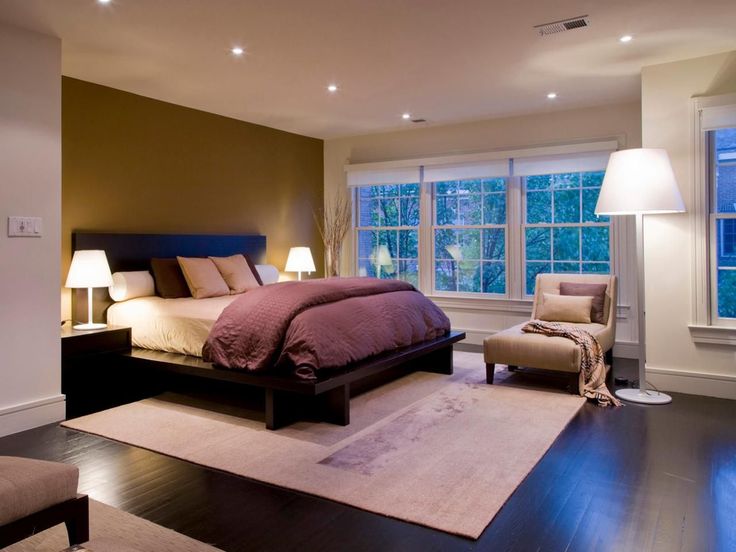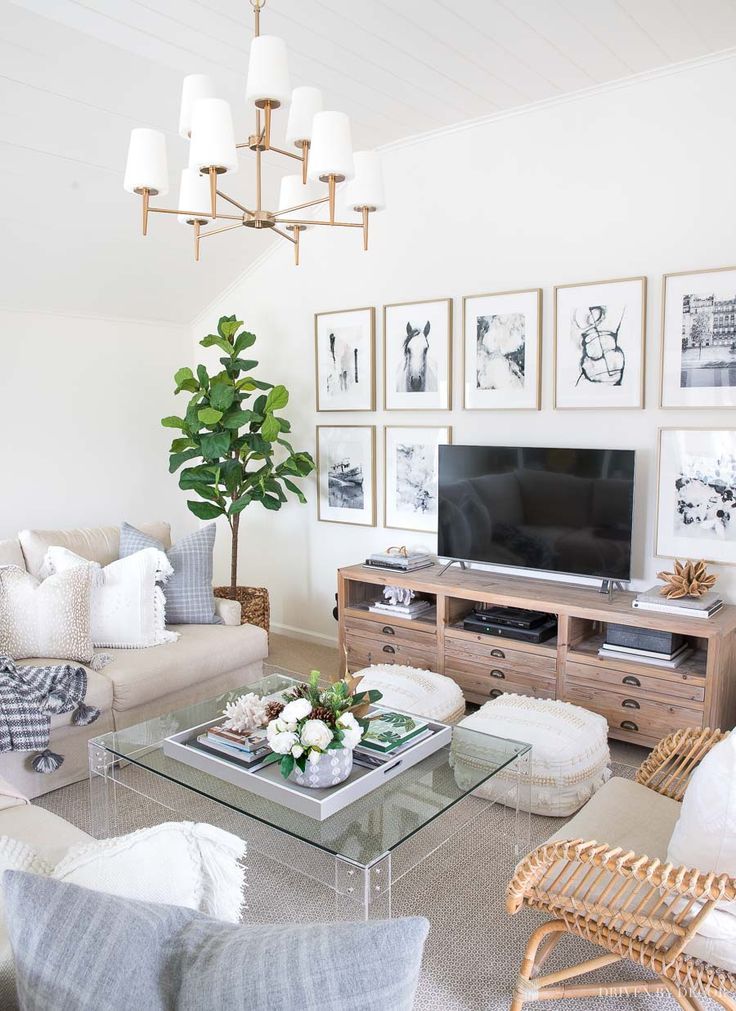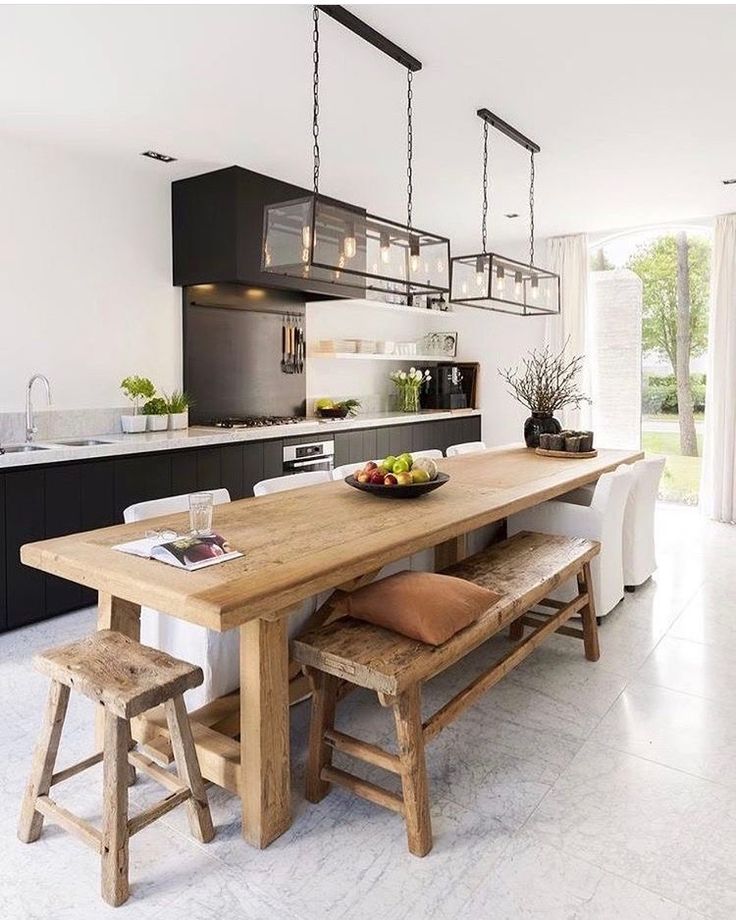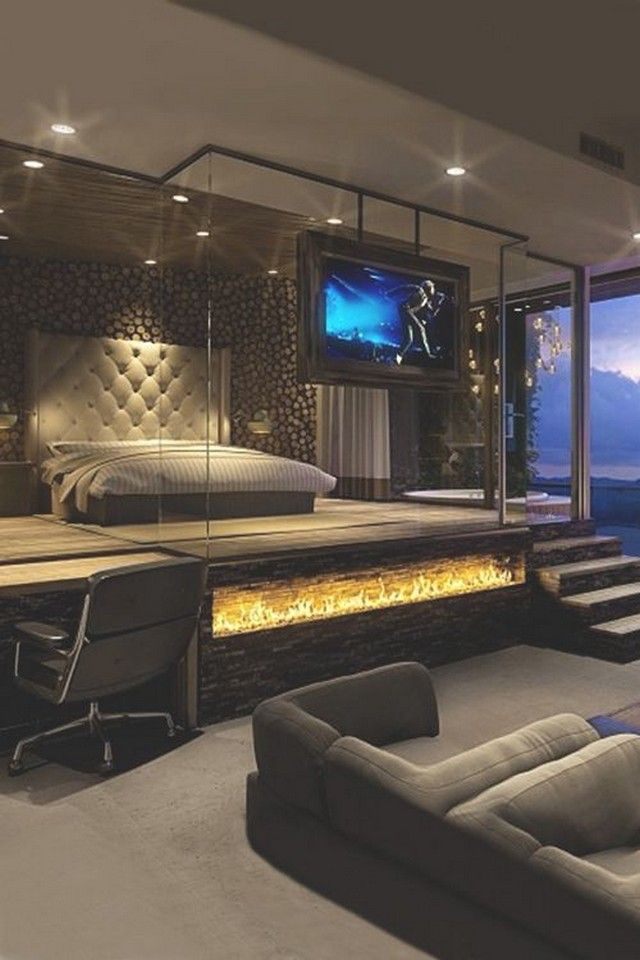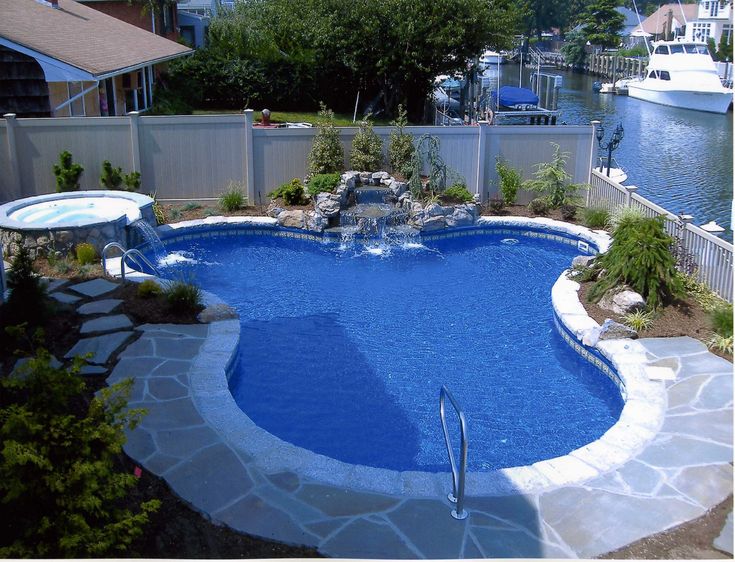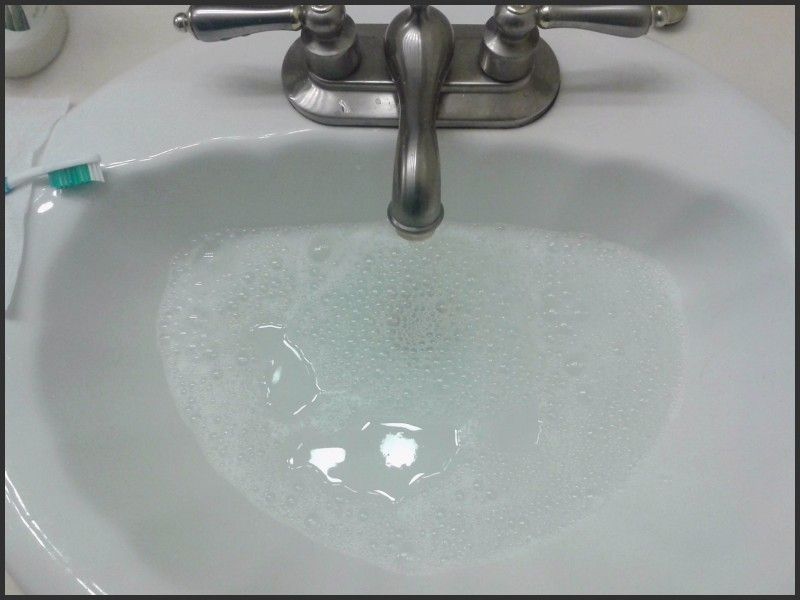Proper room lighting
How to Light a Room
Have you ever walked into a room and marveled at how the light was diffused? Probably not—and for good reason. When lighting is impeccable you hardly notice it. "If a room is lit the right way, everyone looks their best and feels relaxed and comfortable, but they don't know why," says Lindsey Adelman, a New York–based industrial designer who specializes in light fixtures.
Carefully considered bulbs and fixtures create an inviting environment that encourages people to linger. One of the biggest missteps is overly bright lighting. "You don't want guests in your home to feel like they're waiting in a hospital emergency room," says interior designer Andrew Galuppi. Here are a few tips to help strike the right balance.
Localize your light source.
A common misconception is that you need to light the whole room. Try instead to incorporate multiple points of light. "The best-lit rooms have layers of light that blend well together," says architect and designer David Rockwell. "Choose your light source, and then determine how to diffuse it." The right lampshade can make all the difference. Rockwell suggests bringing your low-wattage bulb to the store to try it with different shades.
Always add a dimmer.
For multipurpose rooms, dimmers are essential. "They allow for flexibility depending on the time of day, event, or mood, and they're a great energy saver," says Rockwell, who recommends a licensed electrician for any electrical work. Consider it a worthwhile investment, as dimmers reduce energy consumption and increase bulb life. Aesthetically, Adelman says it's nonnegotiable. She believes every overhead light should be wired for a dimmer. "If you only have one light source in the center of the room, you're looking at your shadow all day long," says Adelman. "It makes for a depressing base. "
"
Know your bulbs.
Fluorescent tubes should be avoided at all costs. "They make everything look off color and can lead to fatigued eyes," says Galuppi. Compact fluorescent light bulbs (CFLs) are a great option, however, but you need to be careful disposing of them. Screw-in LEDs have a long life, but can be pricey. Adelman prefers the dimmable white A-19 LED light bulb from TheLEDLight.com. "It's good for any incandescent replacement, and I love the warmth and the shape."
Consider the function of the room.
What will the space be used for: Cooking? Watching television? Doing homework? In the dining room, an overhead chandelier with a dimmer works best. If you're using track lighting, be sure not to shine the light directly into the faces of guests around your table. Kitchen lighting is more complex. Pinpoint your work areas and light them directly. "Ideally, lights should be below your eye level," says Adelman. "Set up task lights under the stove range or cabinets to light countertops."
"Ideally, lights should be below your eye level," says Adelman. "Set up task lights under the stove range or cabinets to light countertops."
In living rooms, use a combination of floor lamps, table lamps, and down-lights (recessed or track lighting). "Here the lighting should be part of the decor," says Galuppi. Bathrooms are trickier. Some say to go the clinical route—the brighter the better—especially at the vanity. But others prefer a softer glow from dimmable sconces. Compromise and incorporate both with the addition of candles. "Candlelight helps you unwind while you soak in the bath," says Galuppi. Master bedrooms should feature good reading lights at the bed and desk, and a task light for getting dressed. Any overhead lighting should be fit with a dimmer.
9 Designer-Approved Rules for Lighting a Room
By
Ashley Chalmers
Ashley Chalmers
Ashley Chalmers is a lifestyle expert and writer with over a decade of experience traveling the world and translating her adventures into decor. She specializes in writing about farmhouse decor, small space organizing, and urban living. Ashley is also the co-founder of The Lazy Travelers blog.
She specializes in writing about farmhouse decor, small space organizing, and urban living. Ashley is also the co-founder of The Lazy Travelers blog.
Learn more about The Spruce's Editorial Process
Published on 09/27/21
Land and Sky Designs
While most interior design images are taken in bright daylight to show off the natural contours of a room, lighting design plays a huge part in how a space is received in real-time. As Stephanie Lindsey of Etch Design Group says, “Lighting, [or] the balance of dark and bright, can completely change the vibe of a space."
We turned to the experts to find out how to light a room, which lights work best, and what so-called rules we should keep in mind for our favorite places and spaces. Before that, though, one thing's for sure: Every single designer we spoke to agreed that one rule is paramount—never rely on just one light source to light a room.
-
01 of 09
Lighting Sets the Tone
Etch Design Group
“Consider the feel you're going for before you decide on lighting,” Lindsey says.
 “In a living room, for instance, the goal is often comfort and coziness. You'd start with an eye-catching fixture in the middle of the room and then add warmth with floor lamps and table lamps. Accent lights are also a must if the room's design contains art—it draws the eye.”
“In a living room, for instance, the goal is often comfort and coziness. You'd start with an eye-catching fixture in the middle of the room and then add warmth with floor lamps and table lamps. Accent lights are also a must if the room's design contains art—it draws the eye.” -
02 of 09
Note the Room’s Style, Aesthetic, and Time Period
Dazey Den / @dazeyden
If you’re going for a specifically stylized space, the lighting rules may vary, because your light source needs to match the aesthetic. Otherwise, it’ll stick out like a sore thumb.
“Are you a maximalist who gets lost in the dripping reflection of a glass chandelier, or more of a minimalist who prefers a 1920s style globe drop chandelier? Or [do you prefer] the more modern approach of a surreptitiously placed LED tape or spotlight?” asks Lizzy Laing of @renovationHQ. “Period properties with modern extensions give lots of opportunities to play with a multitude of lighting styles, too.
 ”
” But while one or two of these styles might co-exist well depending on the space, mixing too many light source styles is just going to make a mess.
Case in point: This eclectic living room by Dazey Den boasts unexpected lighting fixtures that match each other, thanks to the curved shades and silver metallic accents, while furthering the playfully eclectic feel of the room.
-
03 of 09
Hide Your Bulbs
Perla Lichi Design
Perla Lichi, Owner at Perla Lichi Design, says, “Lighting fixtures should be seen, but the bulbs should be hidden and light should not be directly head-on.” One space this is often a problem but easy to combat is in the kitchen, where Perla suggests using under-counter and LED lighting.
-
04 of 09
Dimmers Are Your Friends
Courtney Sempliner
“I want almost everything to be on dimmers,” says Heather McKeown of Land and Sky Designs. “Controlling the lighting in a space is of paramount importance in regulating the various functions and ambiances in any given room.
 You do not need the same amount of light when you are lying in bed reading as when you’re washing the floors and dusting the room.”
You do not need the same amount of light when you are lying in bed reading as when you’re washing the floors and dusting the room.” Designer Courtney Sempliner agrees: “They really help you adjust the ambiance of your home for the different times of day and for various occasions, like entertaining. This is one item that I strongly recommend to all clients—it makes a huge difference.”
-
05 of 09
Mix and Match Your Light Sources
Land and Sky Designs
“Smaller spaces can be warm and inviting with just a few floor and table lamps, while larger spaces often require light overhead,” Lindsey says.
No matter what, Lindsey always advises using multiple light sources. “Using only one source often results in a room with light that glares or shadows that dull.” It’s also why she tells people to beware of overdoing it with overhead lighting.
McKeown has the same warning. “Overhead lighting should not be the main source of light. While it does provide ambient, even lighting to a space, it casts shadows that will inevitably not make you look or feel your best.
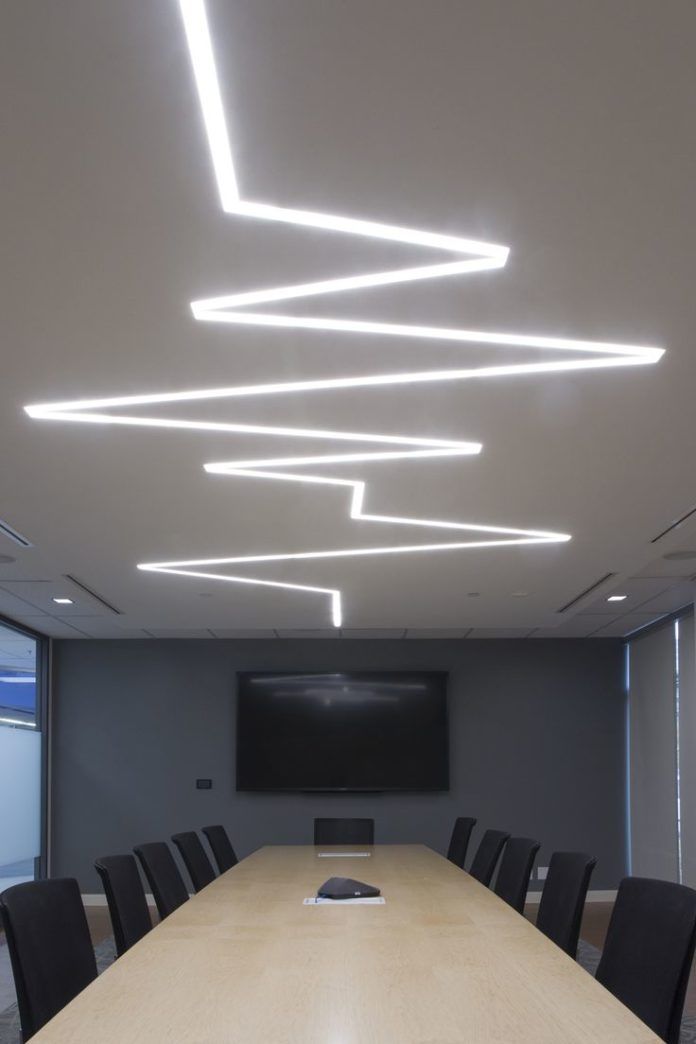 ”
” Instead, she says it’s all about layers: “There is not a simple cut and dry formula for [how many light sources you need in each room], but rather an alchemy that is created when light is layered and integrated seamlessly into a space.”
-
06 of 09
Consider Your ‘Shade’ of Lighting
“There are different shades of lighting that can affect the entire room,” Lichi says. “Some have softer and more white light, and [others have] adjustable three-way lighting that can be good for nightstands or even reading lights at an end table.”
McKeown is particularly systematic about selecting a bulb tone. “One of the first things to consider when selecting a light bulb is the color temperature of the bulb,” she says. “Color temperature refers to the amount of whiteness of the light and is measured in kelvins, with low kelvin light appearing warm and high kelvin light appearing cool. To put this in perspective, daylight at noon is about 5500 Kelvin. For residences, I always stick to around 2700-3000 Kelvin so that the light feels warm and inviting.
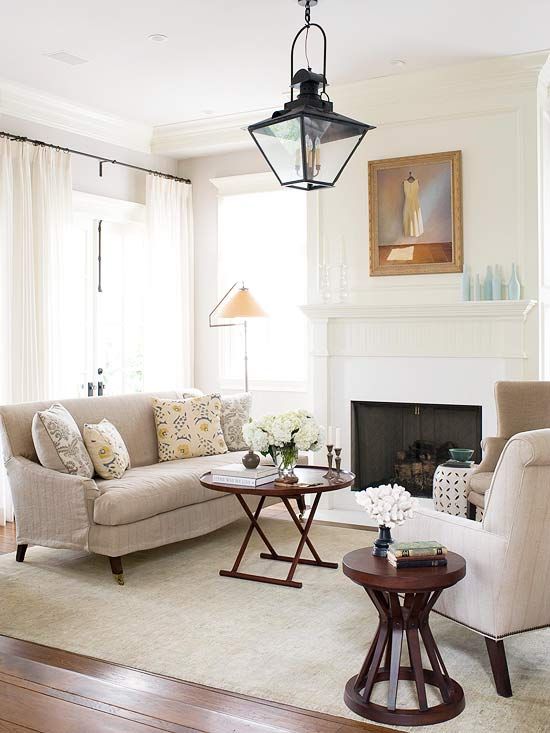 ”
” “Another important measurement of the light quality of a bulb is the CRI, or color rendering index, measured on a scale of 0-100,” McKeown says. “This derived measurement describes how well the bulb renders colors true. For residences, we try to ensure that a CRI of at least 80 is being used in the lighting so as not to distort the colors used in the design of the space.”
Lindsey agrees: “We love warm-white shades. They make a space inviting. Avoid blue-white—it gives off an industrial look.”
-
07 of 09
Make Sure Your Lighting Isn’t in the Way
Light and Dwell
If you’re lighting a room from above, make sure your light source isn’t blocking anything integral to the space. “Avoid lighting that gets in the way of room views, such as ocean or mountain views,” Lichi says.
Similarly, your light sources should work with the flow of your room. “Make sure [your lights are] also not in the way of walking space,” she adds.
Entryways are typically lit by overhead lights, but that's not always an option—which isn't to say that you're resigned to tripping over a floor lamp with every entry.
 This charming entryway by Light and Dwell uses a table lamp on a tucked-away console table to illuminate the space.
This charming entryway by Light and Dwell uses a table lamp on a tucked-away console table to illuminate the space. -
08 of 09
Switches Are Important
“Lamps can be a very versatile and soft way to express your personal style, just make sure you have some well-placed switches to power them,” Laing says. “Playing with light switch finishes can also be lots of fun. Are you a brushed nickel fan, or is brushed brass more your bag?”
Considering you’ll use the light switch every day, it makes sense that you’d want this tiny detail to fit the flow of your space, too.
-
09 of 09
Think of Lampshades as Fun Accessories
House of Harvee
“Shades on lamps can be a great way to express yourself and compliment your interior decor and color palette,” Laing says. “Whether that’s through a pale linen shade or a more stylistic abstract shade, it’s a perfect way to reflect your personal style in your home.”
Take this living room by House of Harvee: The lampshade on the pendant light is bursting with character, tempering the pink of the sofa and giving the room a natural.
 feel.
feel. The 15 Best Places to Buy Lighting Fixtures of 2022
How to make good lighting in the room. Tips and tricks
Correct and good lighting in a room is a quality indicator of the interior and the design implemented in it. It helps to place accents, improves the aesthetic characteristics of the apartment, emphasizes the overall style and sets the tone for the mood. Without the organization of lighting design thought out to the smallest detail, many nuances of the design project and decorative elements may not play their role. While good lighting in the room is enough for the organic existence of all the details in general. nine0003
Where does good lighting in a room start? Basic concepts
Before we start planning and implementing lighting, we suggest understanding the basic principles and concepts. The lighting design of a dwelling can be conditionally divided into three types:
1) General or central - designed to illuminate the entire room. Lamps are installed in such a way that every corner of the room is illuminated. In most projects, the role of central lighting is played by a chandelier or ceiling lights. But in some cases it can be point light sources. Implementation options depend on the purpose and area of \u200b\u200bthe dwelling. nine0003
Lamps are installed in such a way that every corner of the room is illuminated. In most projects, the role of central lighting is played by a chandelier or ceiling lights. But in some cases it can be point light sources. Implementation options depend on the purpose and area of \u200b\u200bthe dwelling. nine0003
2) Local or local - designed to complement the central lighting and highlight certain functional areas of the room. It is implemented using the following types of luminaires: wall, table, floor, recessed and mounted. The possibilities and features of each type allow you to organize good lighting in a room of any design.
3) Decorative. Local lamps are used as decoration, focusing on a piece of furniture or interior element. As decorative lighting, various backlights or small lamps are used. nine0003
Proper room lighting. General rules and recommendations
For efficient and correct lighting of a room, it is necessary to combine lamps: for general and local purposes; brightness, intensity and power.
For example, if the room is multifunctional, then general lighting and additional lighting should be used. It can be a combination of a pendant chandelier in the center of the ceiling and a floor lamp with several sconces in different areas. Such lighting of the room will look good in the living room, as it can be used on special occasions or for quiet home gatherings. And each situation will have to be accompanied by different lighting. nine0003
The power, brightness and other characteristics of the luminaires must be selected in full accordance with the room and taking into account other light sources in it. For example, the power of central lighting must be calculated taking into account the area of \u200b\u200bthe room. If additional lighting is sometimes used as the main one, then the total power should also be enough according to these calculations. You can combine lamps and the color of the light they give out. For example, central lighting can be decorated with “warm light”, and additional lighting can be made “cold”, or vice versa. nine0003
nine0003
For good lighting in the room, it is sometimes enough to use non-standard light sources. For example, a chandelier in the hallway or a pendant lamp above the reading chair. In this way, you can emphasize your own style and give a special mood.
To create additional accents in certain areas of the room, you can use recessed luminaires in a suspended multi-level ceiling. In some cases, it turns out to visually divide the room into several parts. nine0003
Colored LED tracks can be "drawn" on all planes of the room. On the ceiling, wall or floor, LED strips sometimes highlight the perimeters and give additional texture to this plane.
Harmonious and good lighting in the room is realized with the help of lamps from one collection. A chandelier, a floor lamp and a sconce in the same style and performance will look great in the corresponding design project.
To highlight any piece of furniture or area, use additional lighting with directional light. Wall lamps or sconces perfectly focus on the desired area. nine0003
Wall lamps or sconces perfectly focus on the desired area. nine0003
If you want to realize lighting in the room that is as close as possible to daylight, then you need to select lamps with a color temperature of about 4000K. If you need a softer and warmer color, then this figure should be lower - about 2700K.
The distance between the ceiling lamp and the floor should not be less than 2 meters, otherwise it will interfere and poorly illuminate the room.
If there are elements such as tapestries or paintings in the interior, do not miss the opportunity to highlight them. This will allow you to focus attention and stand out from the general background. For this, special decorative lamps are used. nine0003
When illuminating the mirror, try to use two identical wall lamps with a soft, non-dazzling light. Place them symmetrically on both sides of the mirror just above eye level.
Try to use lamps with even directional light for reading. Install them not far from eye level so that you do not have to strain your eyes when reading.
For good lighting in the room, it is enough to choose something between bright, blinding light and semi-darkness. Lighting should perform its main function and at the same time not blind. It is best to organize it with the help of several types of lamps - this will allow you to change the intensity and power depending on the situation. The additional ability to adjust the fixtures themselves will add versatility. Some modern models are made with dimmers and remote controls. nine0003
In order for the lighting in the room to be truly correct and good, try to carefully think through all the details before buying lamps. Calculate the power and other indicators for your specific case, consult with the designer, lighting equipment specialists or sales consultants. Any advice at the selection stage will be useful and will help to avoid unnecessary costs.
Good lighting in the room - 7 main rules. The best solutions in engineering and design. nine0001
If you want to make good quality lighting in the rooms of your apartment or house, you need to follow 7 basic rules.
This is what most designers and planners adhere to when compiling their expensive projects. They are not so complicated and will be clear to any user and customer.
Number of light sources
Avoid using only one light source whenever possible. The well-known classic way is to illuminate the room with a large chandelier. nine0003
On the one hand, of course, it's great when you can light up a large space with just one powerful lamp. No problems with a bunch of wires, a choice of fastening points.
However, from the point of view of good lighting design, it is better to illuminate the space with several local light sources. For example, floor lamps, single suspensions, wall lamps.
The most common option is spotlights.
All this diversity gives you the opportunity to combine the lighting environment, making it independent and variable. Use light only where and only when needed. nine0003
What's more, it saves a lot of energy consumption, and allows you to form the environment more evenly.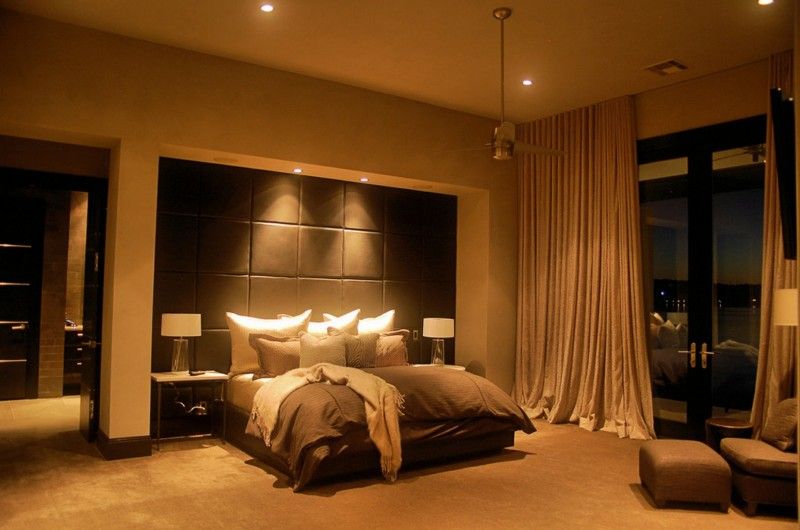 You won't have much contrast between the bulky chandelier that hangs in the center of the hall and the dark corners of the room.
You won't have much contrast between the bulky chandelier that hangs in the center of the hall and the dark corners of the room.
In such a space, both the one who eats at the dinner table and the one who reads a book near the floor lamp feel equally good.
Types of lighting
Always consider the functionality of the room when choosing the type of lighting. There are three main types in total:
- reflected
- accent
- straight or directional
Direct - this is the light from built-in or ceiling lamps shining strictly from top to bottom. This also includes table lamps.
Objects in this light will appear to you a little more voluminous than their actual size.
For the living room and bedroom, indirect light sources are very suitable, which allow you to create a soft, evenly lit environment that is comfortable for the eyes. nine0003
An accent light is a bright, directional light. It is used where you need to draw attention to something, emphasize a separate object or element of the interior.
It is used where you need to draw attention to something, emphasize a separate object or element of the interior.
However, this light source has a big minus - it blinds the eyes very much.
Therefore, it must be used pointwise, thoughtfully, and only where it is necessary and acceptable.
Wall lighting
Never forget to illuminate vertical surfaces. About 80% of our attention in the rooms is riveted to the walls. nine0003
When we move around, communicate with each other, or just sit in a chair, our gaze is always on vertical surfaces, not on the ceiling.
In this case, the ceiling space takes only 15% of the attention, and the floor gets only 5%.
Therefore, if you want to get a comfortable room, where it will be pleasant to be, do not forget about wall lighting. In large living rooms, the concentration of lamps around the perimeter should be done on the basis of this rule.
One color temperature
In a good, cohesive, finished interior, the light environment should be monotonous.
This means that luminaires with the same color temperature must be used for illumination.
A rare exception may be the case when you want to emphasize the texture of some materials, or highlight individual interior items.
Luminaire placement
Try to place the luminaires so that direct eye contact with the light source is avoided as much as possible. nine0003
In a good way, you should not see them directly at all. For example, in high-level restaurants, it is written directly in the instructions that lighting devices should not come into contact with the eyes of visitors.
This allows people to focus on the most important thing - on tasty and healthy food, and not be distracted by blinding light bulbs.
Also do not use spotlights in the bedroom. Especially over the bed.
It would be more correct to distribute the lamps around the perimeter, bypassing your bed. nine0003
If you still need to use accent light in the interior, then use special accessories. For example, anti-reflective grilles.
For example, anti-reflective grilles.
They virtually eliminate eye contact with the bulb or LED inside the light point.
Variation of light
Light in all rooms should be variable. Solutions that adjust the light environment in the room in accordance with the natural human biorhythms are gaining great popularity in this matter. nine0003
It's no secret that our eyes were formed in natural light - sunlight.
The sun changes its color temperature over a fairly wide range. In the morning, afternoon and evening, completely different light emanates from it.
At home, we can also simulate the change in color temperature over time to match our natural biorhythms. Such a lighting system increases efficiency, makes you feel better, and reduces eye fatigue.
This system is very simple and you can create a light environment in your room with a flick of the wrist:
- cold
- or warm
In addition, this process can be automated.